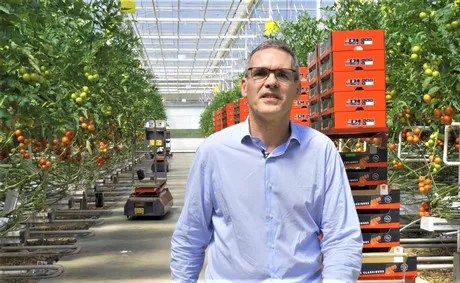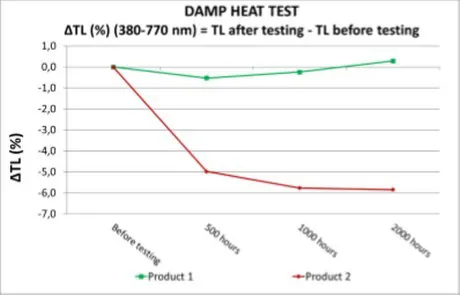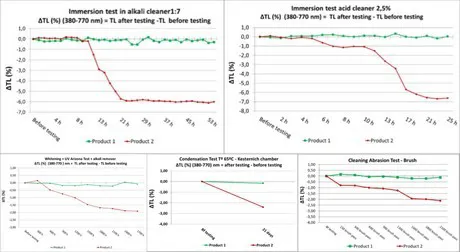Nowadays anti-reflective (AR) permanent coating is becoming more and more prevalent on glass products for the use in greenhouses to maximize the daylight transmittance. Saint-Gobain recently published a white paper in which the company highlights the huge gap of durability between different technical solutions providing AR functionality to the glass surface.

Pascal Chartier of Saint-Gobain
It is generally accepted within horticulture that 1% of light increase leads to a crop yield improvement of 1%. According to Pascal Chartier of Saint-Gobain, AR coating on both sides of a glass panel generally leads to a light increase of up to 6%, so the potential gain for glasshouse growers is significant. Pascal: ”But a coating like this ages, and the benefits of the AR coating will decrease if the coating degrades. Saint-Gobain Glass has developed dedicated laboratory tests to characterize the durability of anti-reflective glass for greenhouse application.”
Types of anti-reflective glasses tested
In greenhouse application there are two main families of glass with anti-reflective function, either transparent or diffuse: acid-etched and sol-gel. With acid-etched, the anti-reflective property is created by etching of the glass surface. Sol-gel is a coating, which permanently sticks to the glass surface, creating the anti-reflective function. For the tests, Saint-Gobain tested one of each of these types of AR glass. Product 1 was a sol-gel AR coated diffuse glass, Saint-Gobain Albarino, and Product 2 was an acid-etched AR diffuse glass of non-specified origin. Both of these were initially characterized at the Lightlab from Wageningen University and Research, and afterwards internal Light Transmittance (TL) measurements were carried out.
Tests
Various tests were conducted and in all the tests it was clear that Product 1, the sol-gel AR coated diffuse glass of Saint-Gobain, retained its TL properties for much longer than the other product. One of the tests they conducted was an accelerated ageing test based on international standards to study the effect of exterior weather conditions. The results showed that after 2000 hours of exposure to weathering Product 1’s AR properties remained as good, if not a little better than, before testing, but Product 2 saw a drastic drop in TL.
 After 2000 hours worth of stress, Product 1’s TL value is even slightly higher than before.
After 2000 hours worth of stress, Product 1’s TL value is even slightly higher than before.
Greenhouse application
Other tests that were conducted were more specific to greenhouse application of the glass, such as the effect of repeated cleaning, whitening treatments, and condensation on the TL values of the glass. In all three of these tests Product 1 was the clear winner.
 Product 1 (green) retains a lot of its properties, even after being exposed to various stresses. (click here for enlargement)
Product 1 (green) retains a lot of its properties, even after being exposed to various stresses. (click here for enlargement)
Conclusion
"In short, Saint-Gobain showed that their sol-gel AR coated diffuse glass lasts for a long time and is able to retain its TL properties throughout many hours of wear. Better TL is better for cultivation, so a highly durable AR glass will provide the best return of investment during the lifetime of the greenhouse", they conclude.
For more information:
Saint-Gobain Cultilene
Serge Pas
tel 0650 631 907
serge.pas@saint-gobain.com
www.cultilene.com
